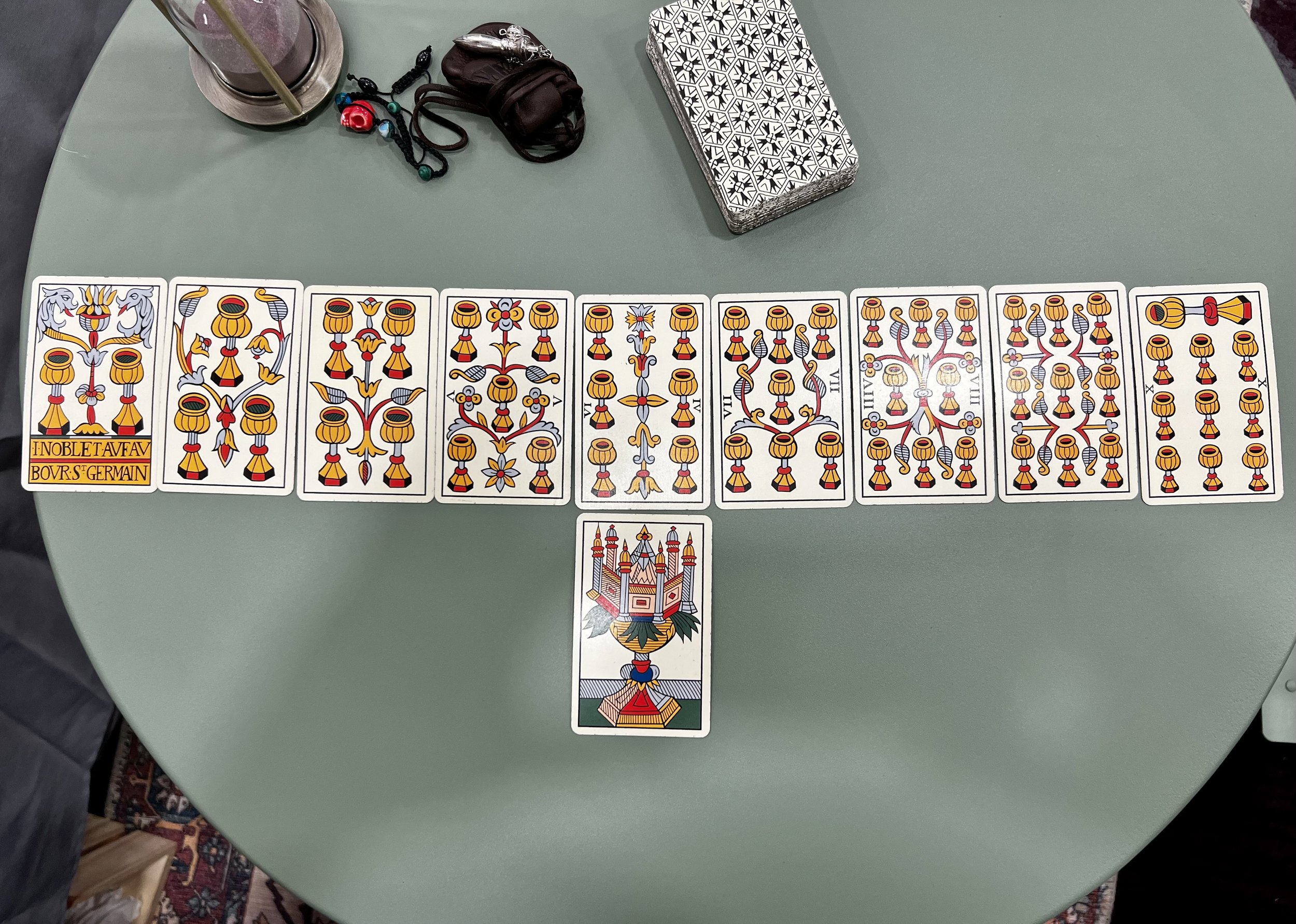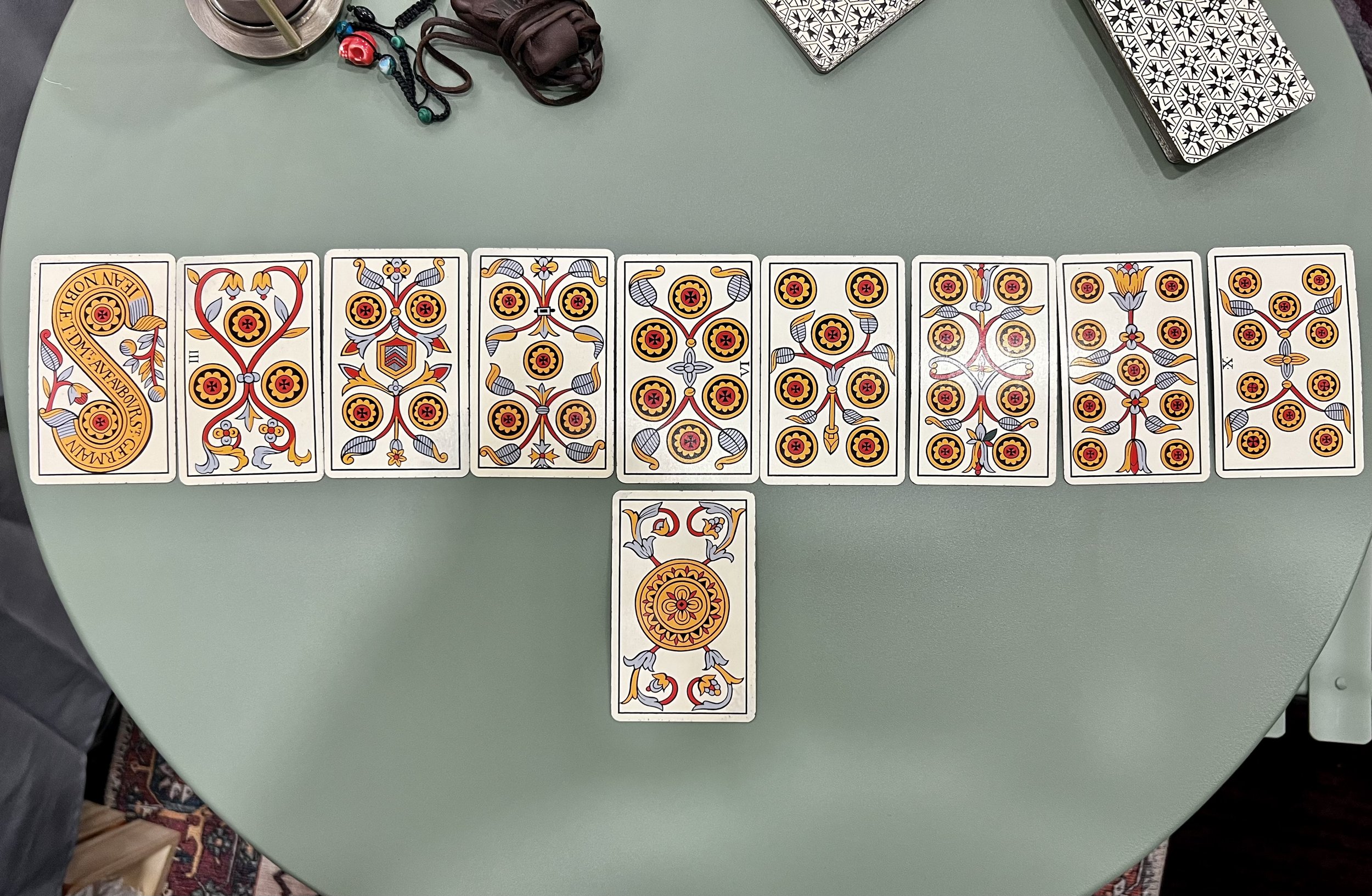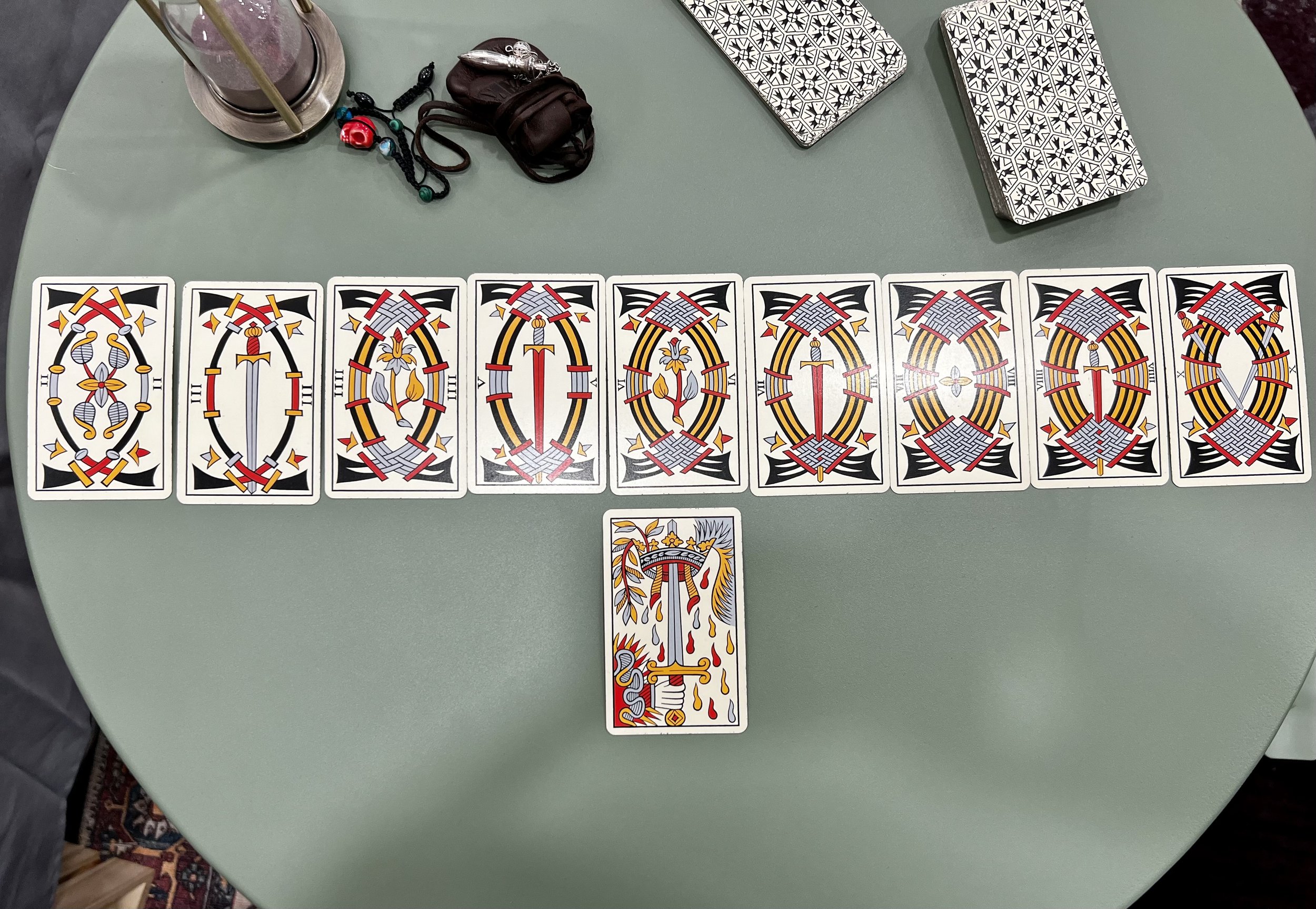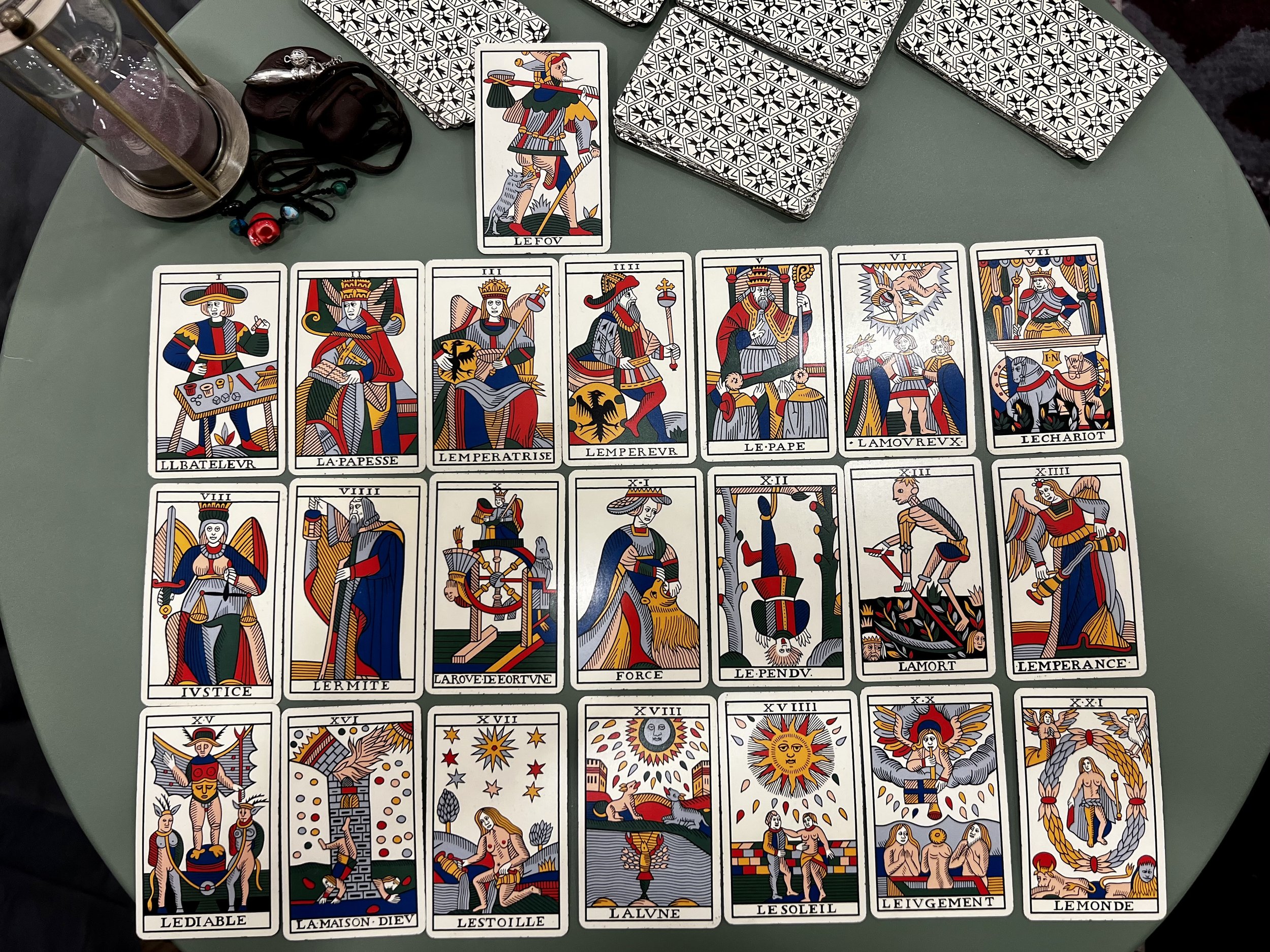Who is myselfismycards?
History
Structure
Reading the Majors
Reading the Pips
Layouts
Msimc
Card, candle, and astrology reading and supply business from Fullerton, Ca, opened in 2019
We read Marseille, Lenormand, Playing Cards, and other card styles
We read and write reports for about 3,000 vigil candles a year
We participate in around 10 live events a year. That number is growing.
We do online readings, phone, email, video, and setting of lights for various purposes and petitions.
We also keep a modest online shop—cards, candles, oils, sprays, and incense.
In this 21st century, we divine with various tools. Some of the tools are older than others. Some work for certain types of inquiries better than others. Each practitioner understands their specialties and how they like to approach things.
Today we look at what is known as the Marseille as an oracular tool culminated through many shufflings of technology, spirituality, and psychology. Itself based on sources that precede it, the various lineages formed a consistently recognizable identity between the early modern period and the age of revolutions, roughly 1450-1850. It directly influenced the common poker deck and was the basis for the Rider Waite Smith and other decks.
What comes together to make reading Marseille cards possible?
?
Cardstock
Printing
Gaming
Divination
Social Conditioning
cultural CompeTence
The desire to understand
Decks
Deck Dates
Mamluk, 1300’s, Egypt
Visconte Sforza, 1400’s, Italy
Noblet, 1650, France
Dodal, 1701, France
Conver, 1760, France
Grimmaude, Paul Marteau, 1930, France
Rider Wait Smith, 1910 England
Thoth 1943, Alester Crowly, Lady Frieda Harris, England
Visconte-Sforza
Around 1450,
They were commissioned by Filippo Maria Visconti, Duke of Milan, and by his successor and son-in-law, Francesco Sforza.
They significantly impacted the visual composition, card numbering, and interpretation of modern decks.[
There are 15 partial decks known
The restorers
Paul Marteau: Grimmaud
Arthur Wait, Pamela Colman Smith: RWS
Jean Claude Flornoy: France (Roxanne)
Osvaldo Menaghazzi: Italy (Soprafino)
Pablo Robledo: Argentina (Dodal)
Hismans Sullivan: Tarot Sheet Revival
Agnes Kapler: France (handmade paper)
Yoav Ben Dov: (Conver Ben Dov)
Joseph Peterson: Photo restoration, Noblet
Reading the Majors
1-21
The Fool
Structure
Pips/Suites
Majors
Courts
Reading the Pips
Less-More
Warm-Cool
Even/Odd
Flowers and vines
Associations
Layouts
French usually use majors only
French cross
3 card, majors
3 card, majors, additional pips
You can use any layout you want







